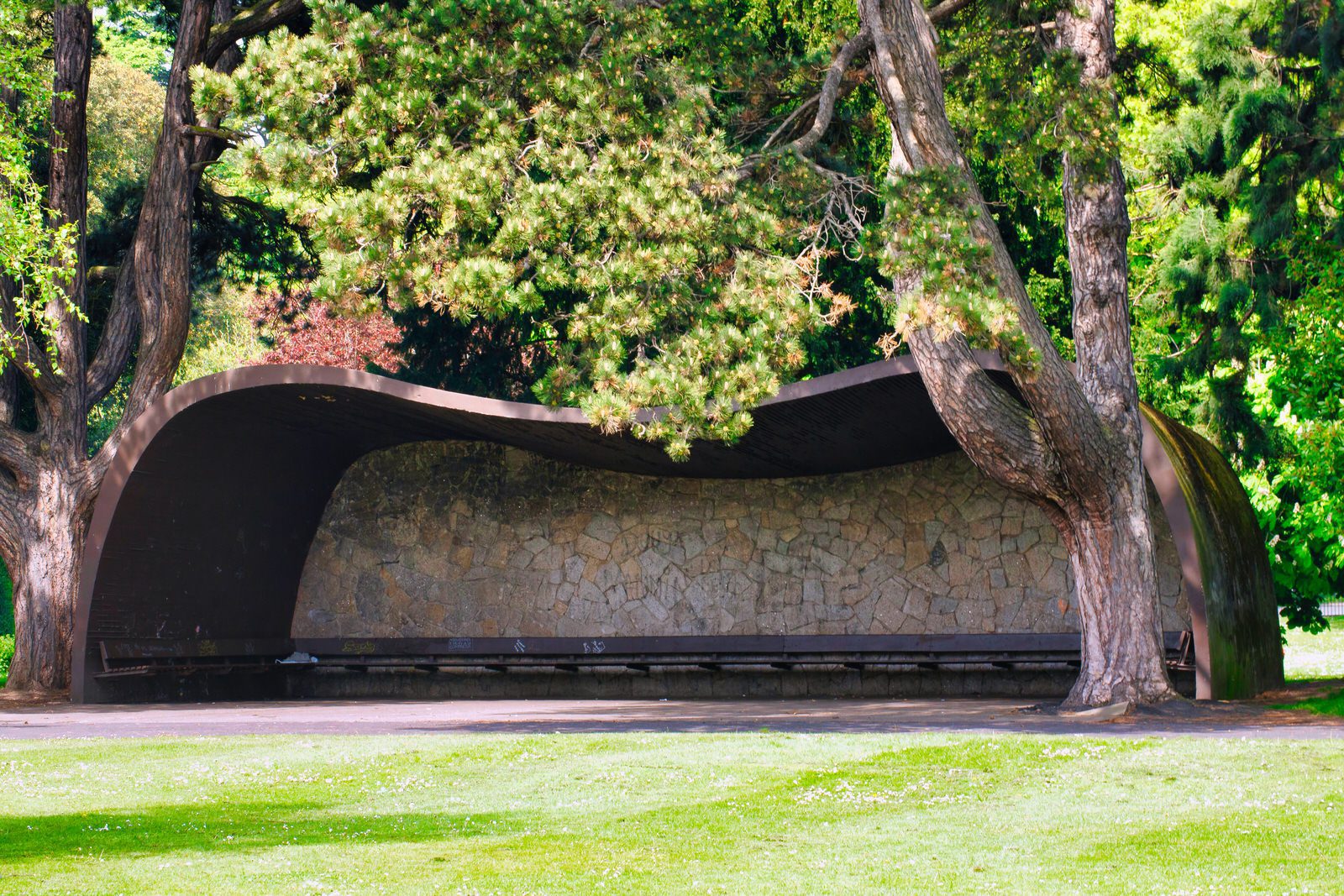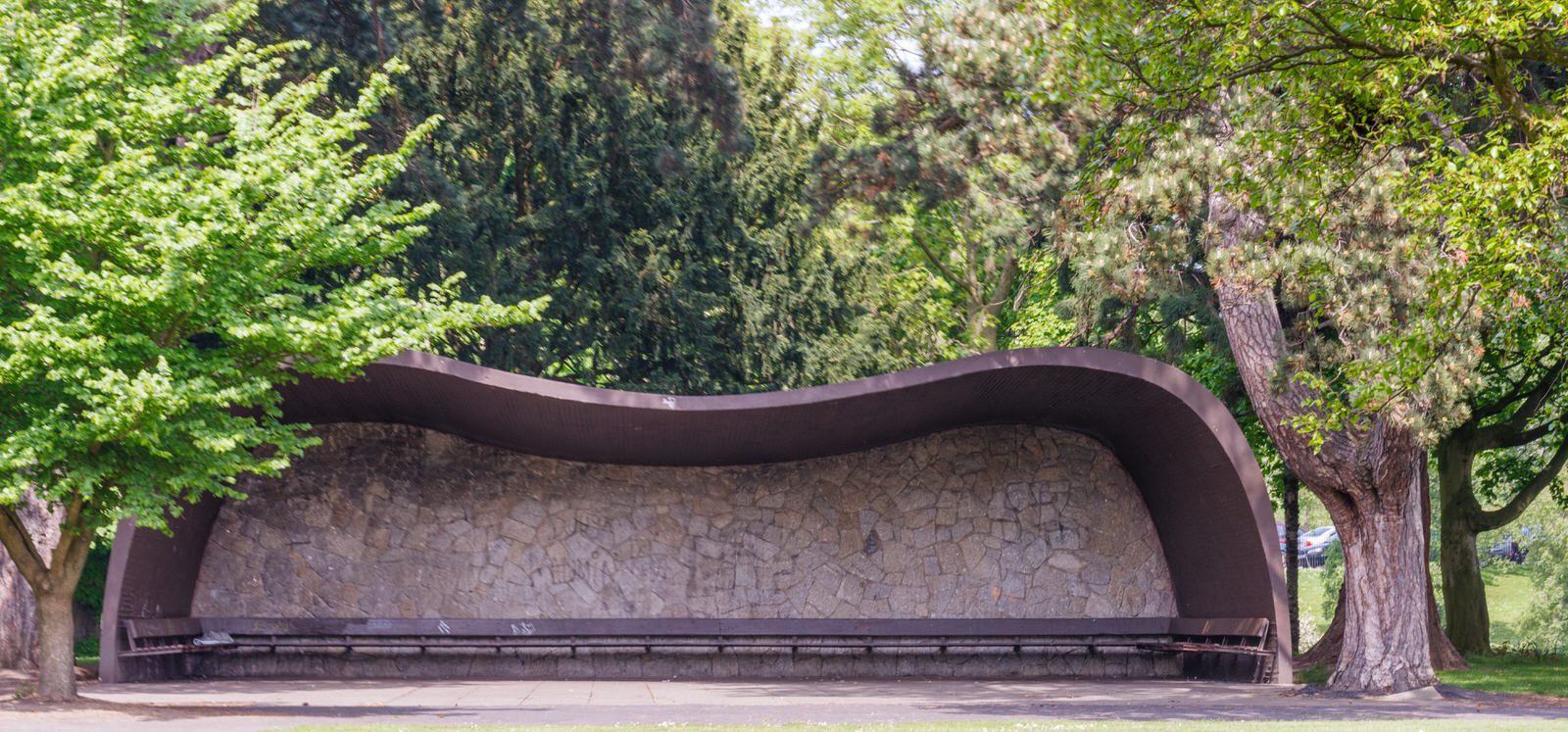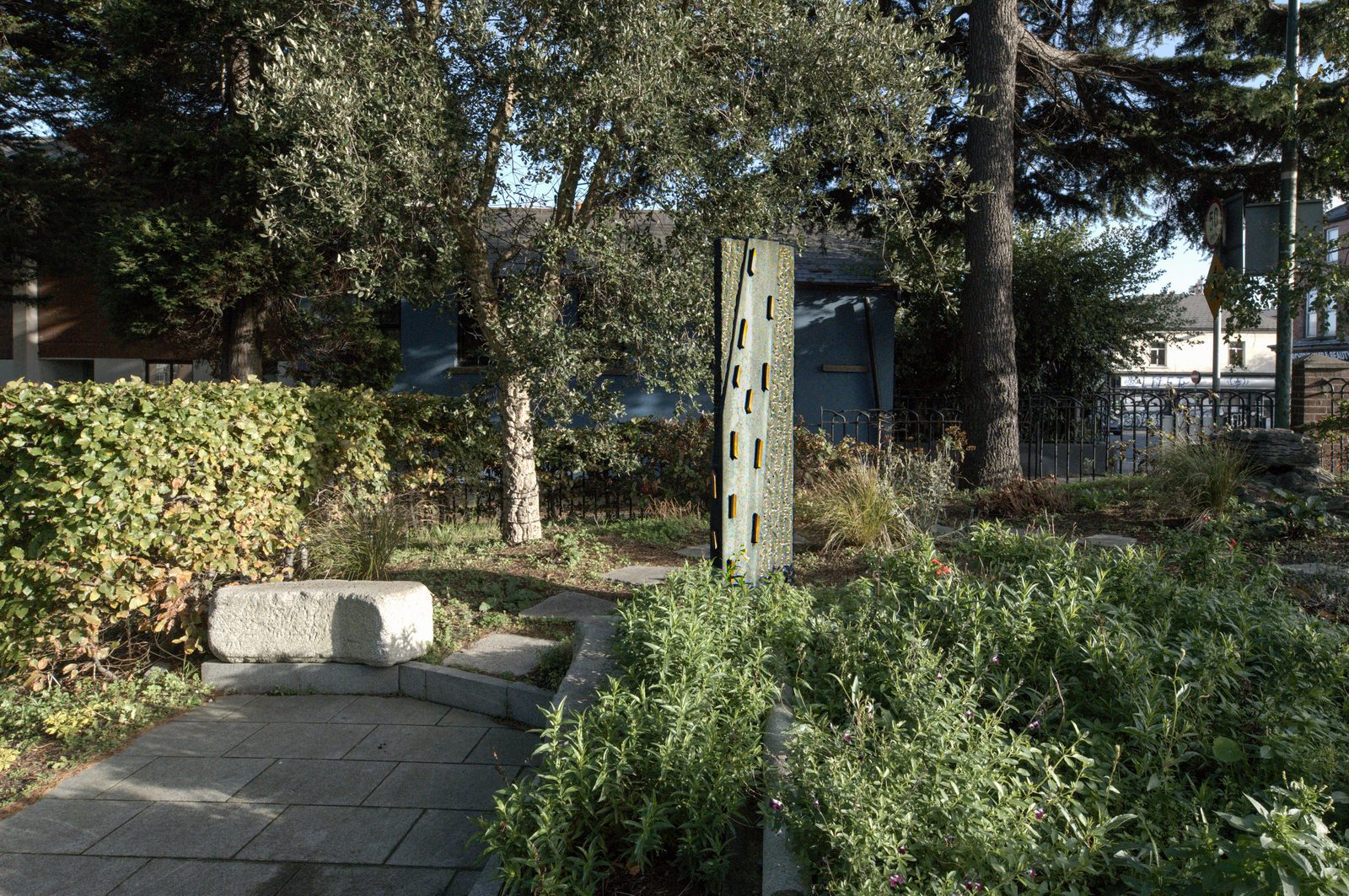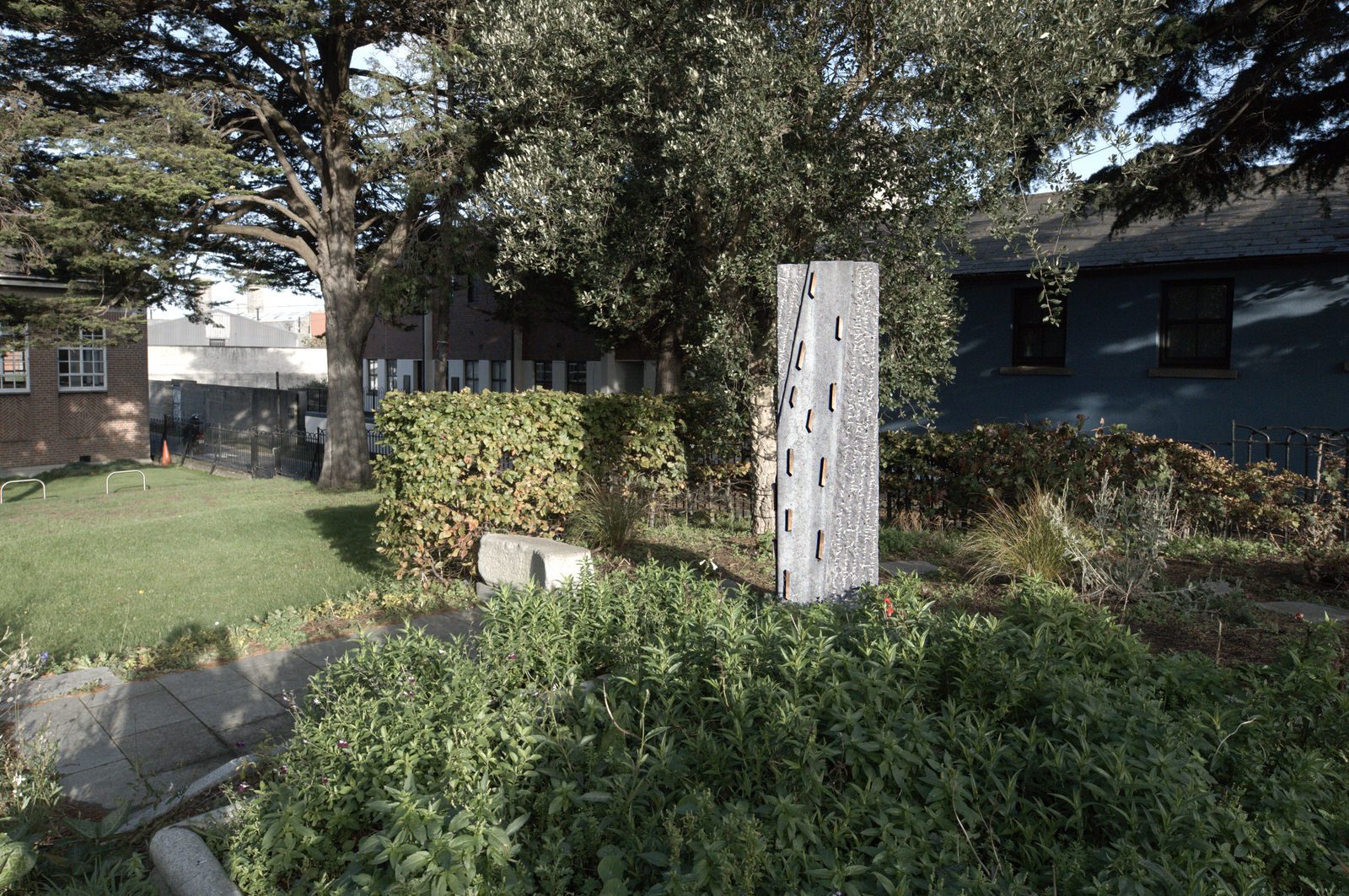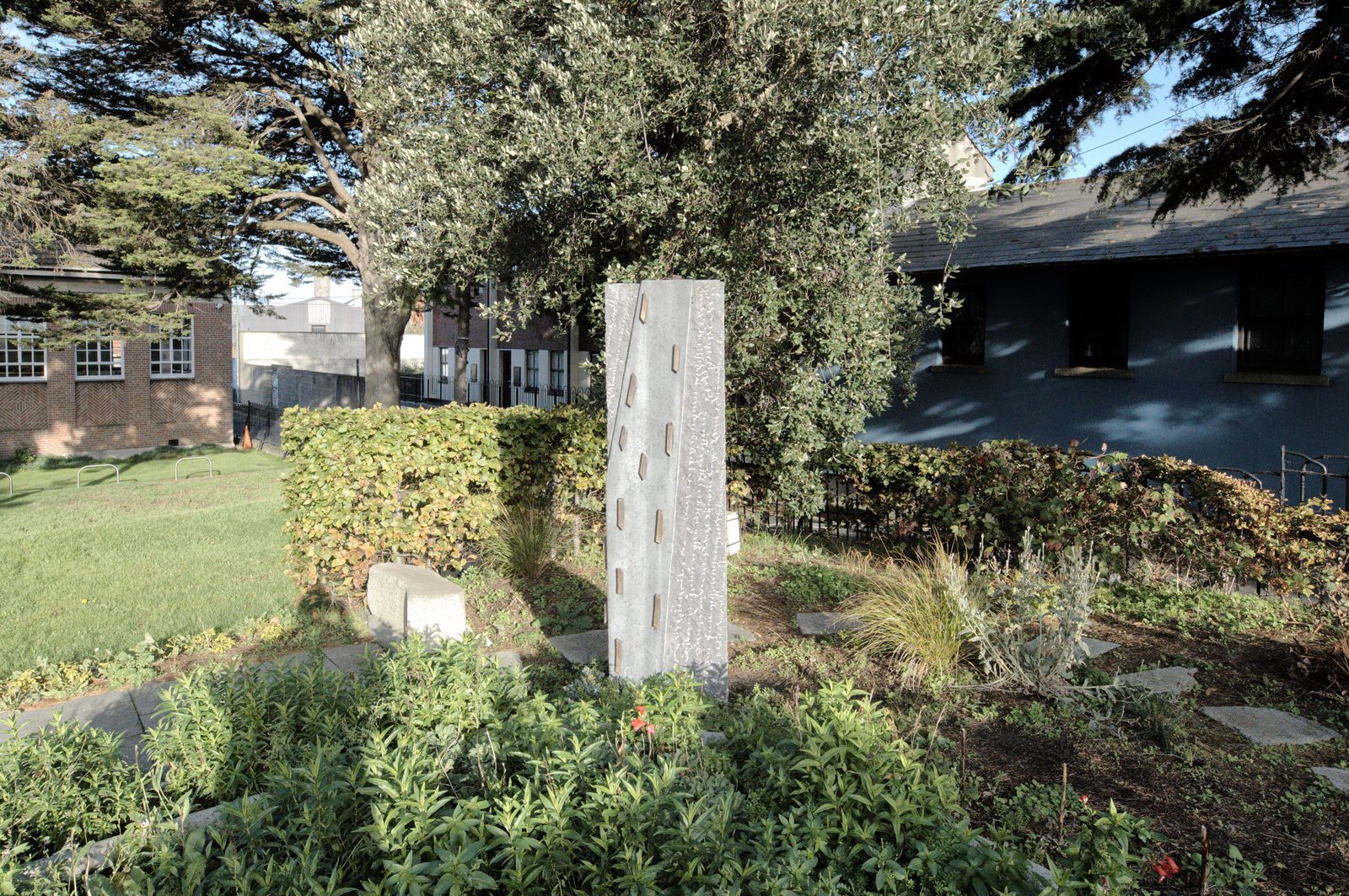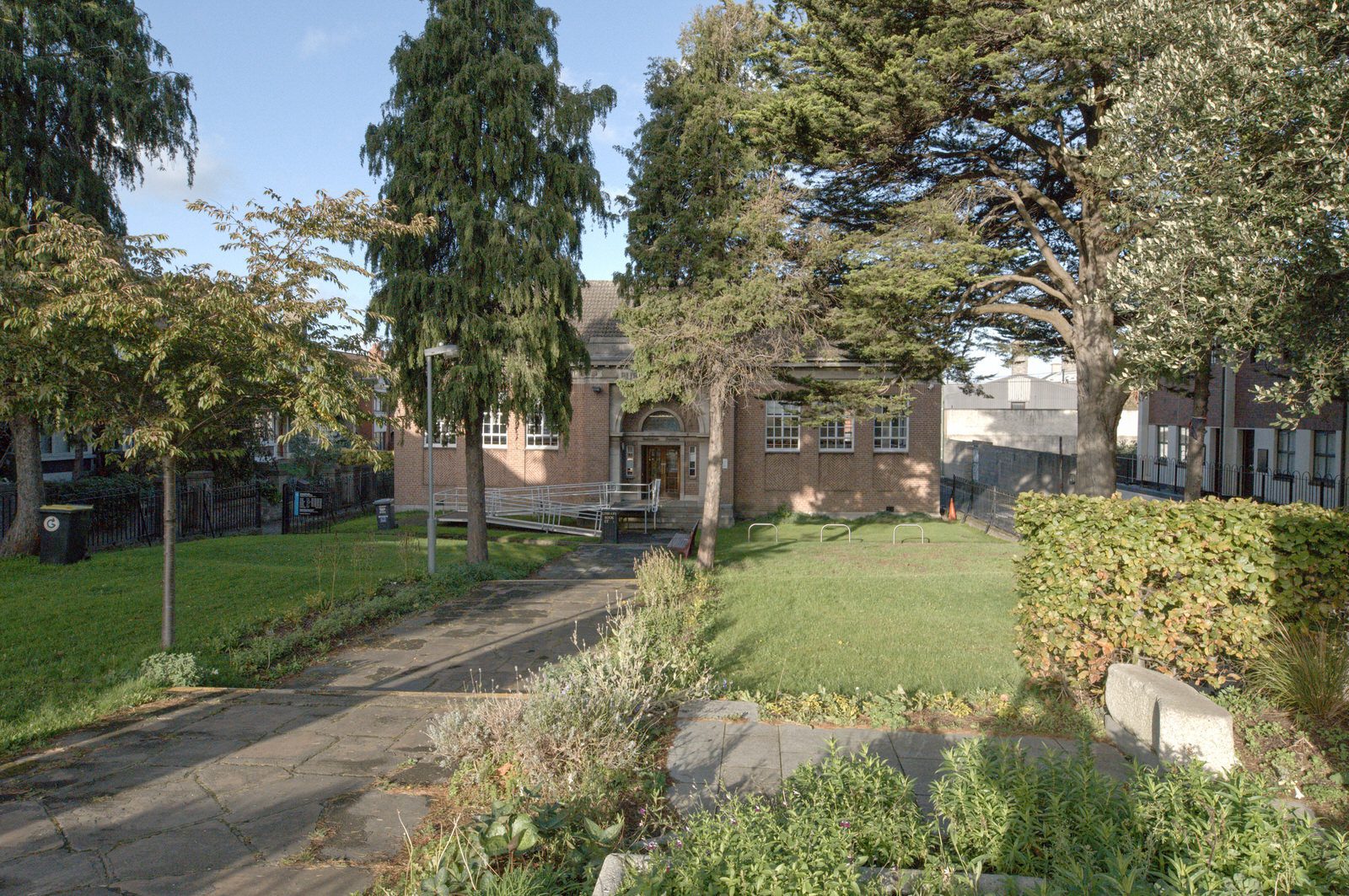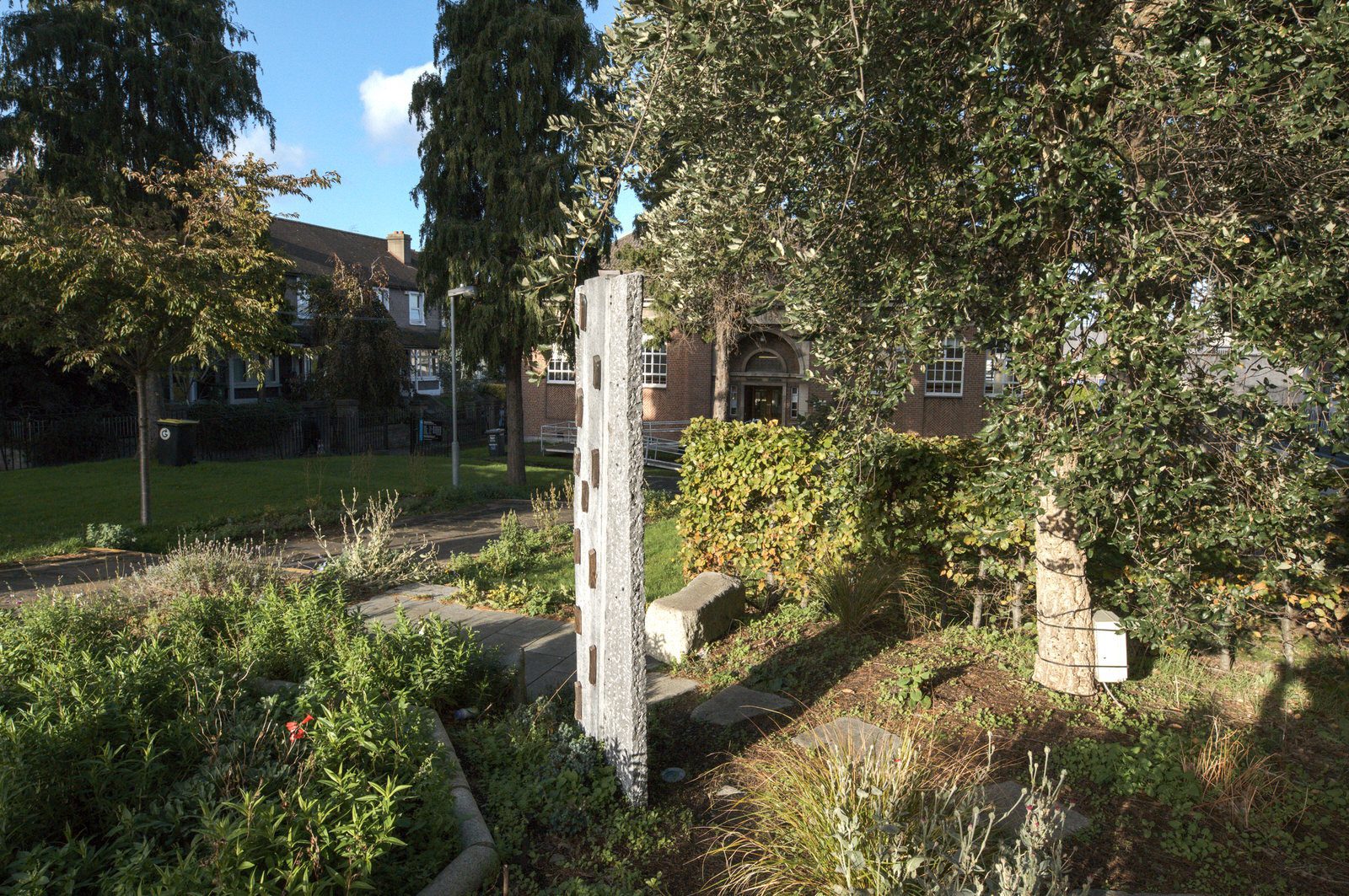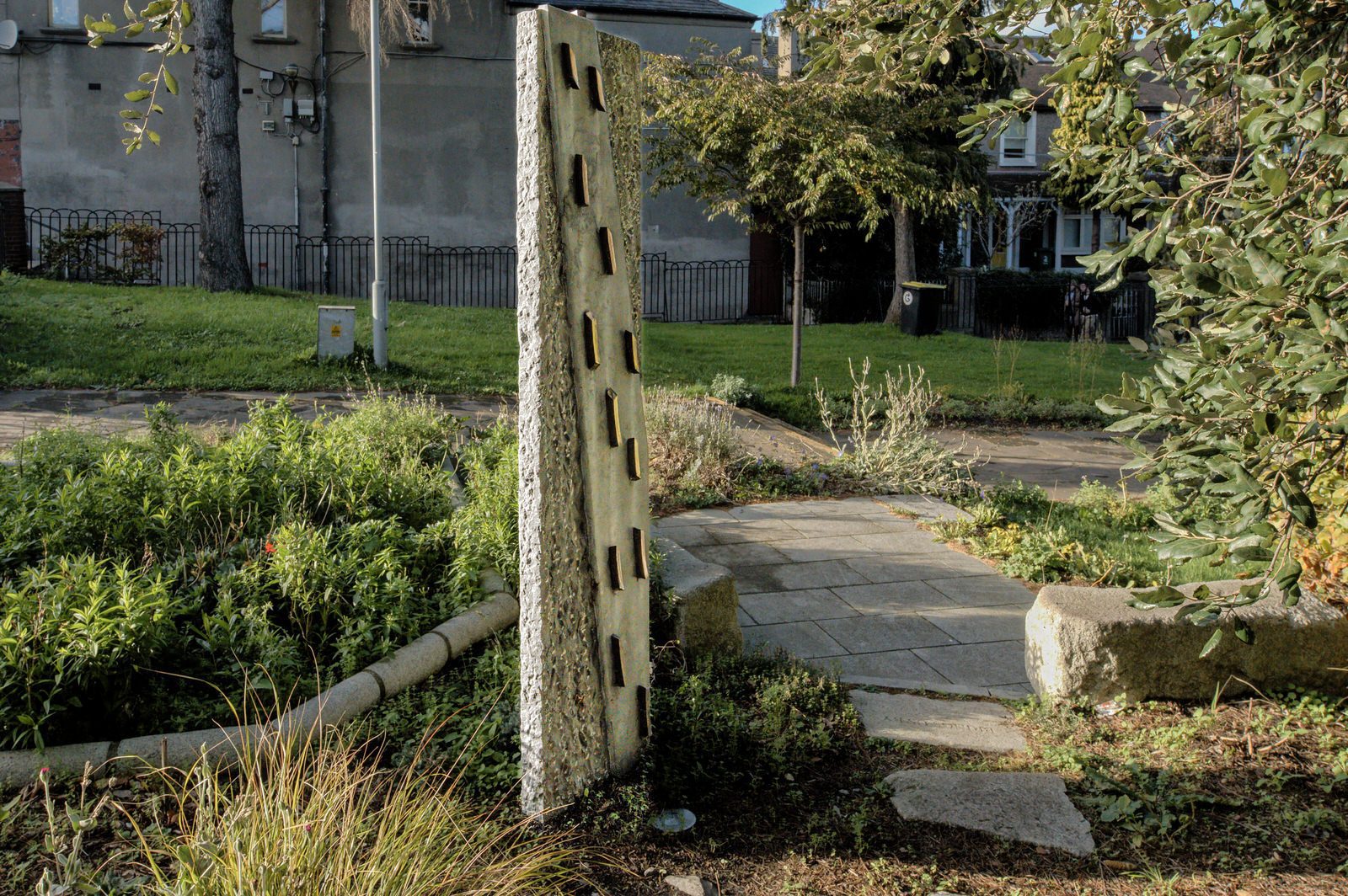ARBOUR HILL 13 APRIL 2023
Halliday Square is a little sliver of parkland at Arbour Hill, populated by ornamental trees and shrubs and surrounded by terraces of both old and new red-brick houses.
Arbour Hill is an area of Dublin within the inner city on the Northside of the River Liffey, in the Dublin 7 postal district. Arbour Hill, the road of the same name, runs west from Blackhall Place in Stoneybatter, and separates Collins Barracks, now hosting part of the National Museum of Ireland, to the south from Arbour Hill Prison to the north, whose graveyard includes the burial plot of the signatories of the Easter Proclamation that began the 1916 Rising. St Bricin’s Military Hospital, formerly the King George V Hospital, is also located in Arbour Hill.
Arbour Hill is derived from the Irish Cnoc an Arbhair which means “corn hill”. The area was owned by Christ Church Cathedral during the medieval period and was used to store corn. The area first appears on a map in 1603 as “Earber-hill”.
As part of his commissioned symphonic work “Irishmen and Irishwomen”, the composer Vincent Kennedy included a movement titled “Arbour Hill”. This movement is a tribute to the Easter Rising participants buried at Arbour Hill.
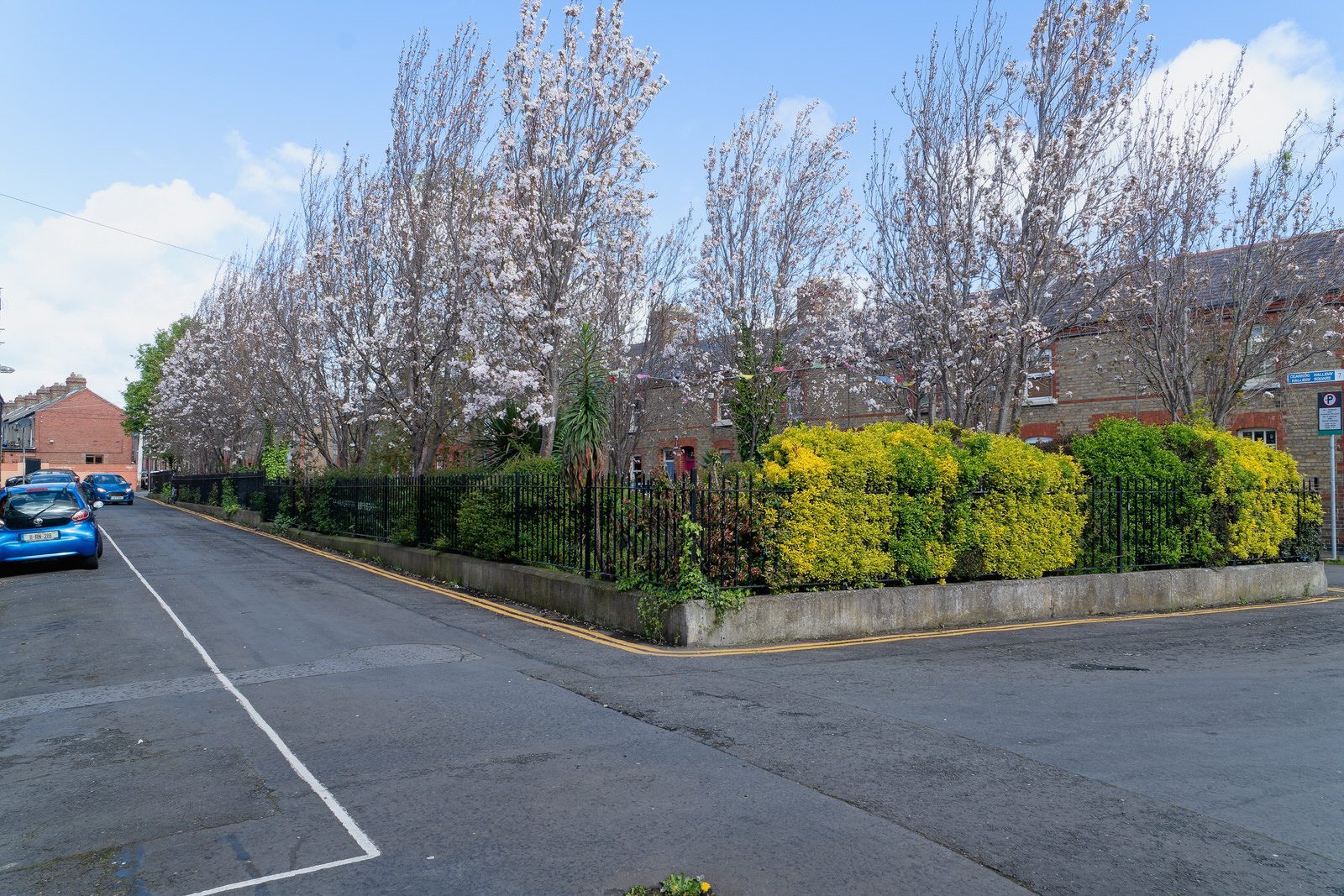

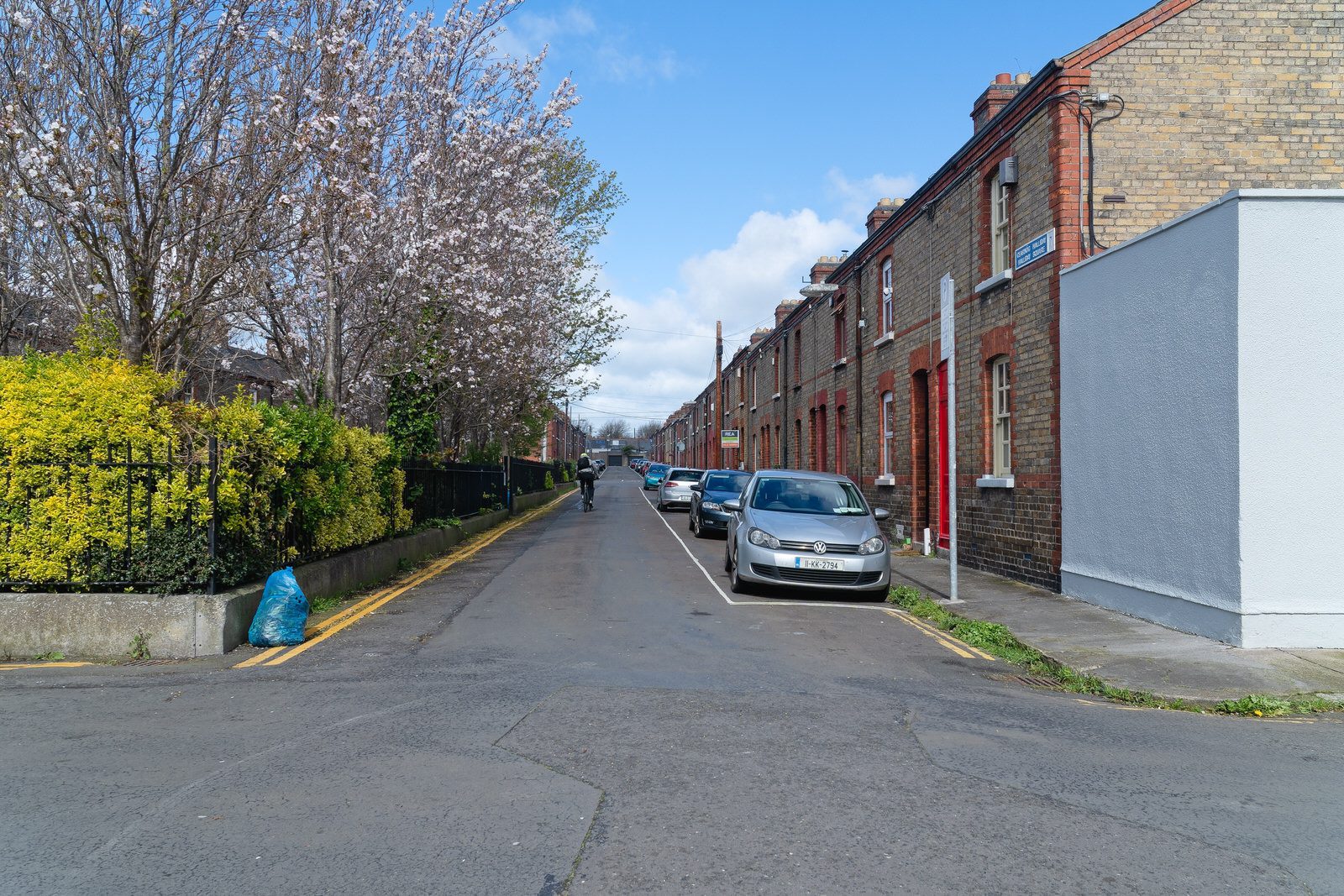
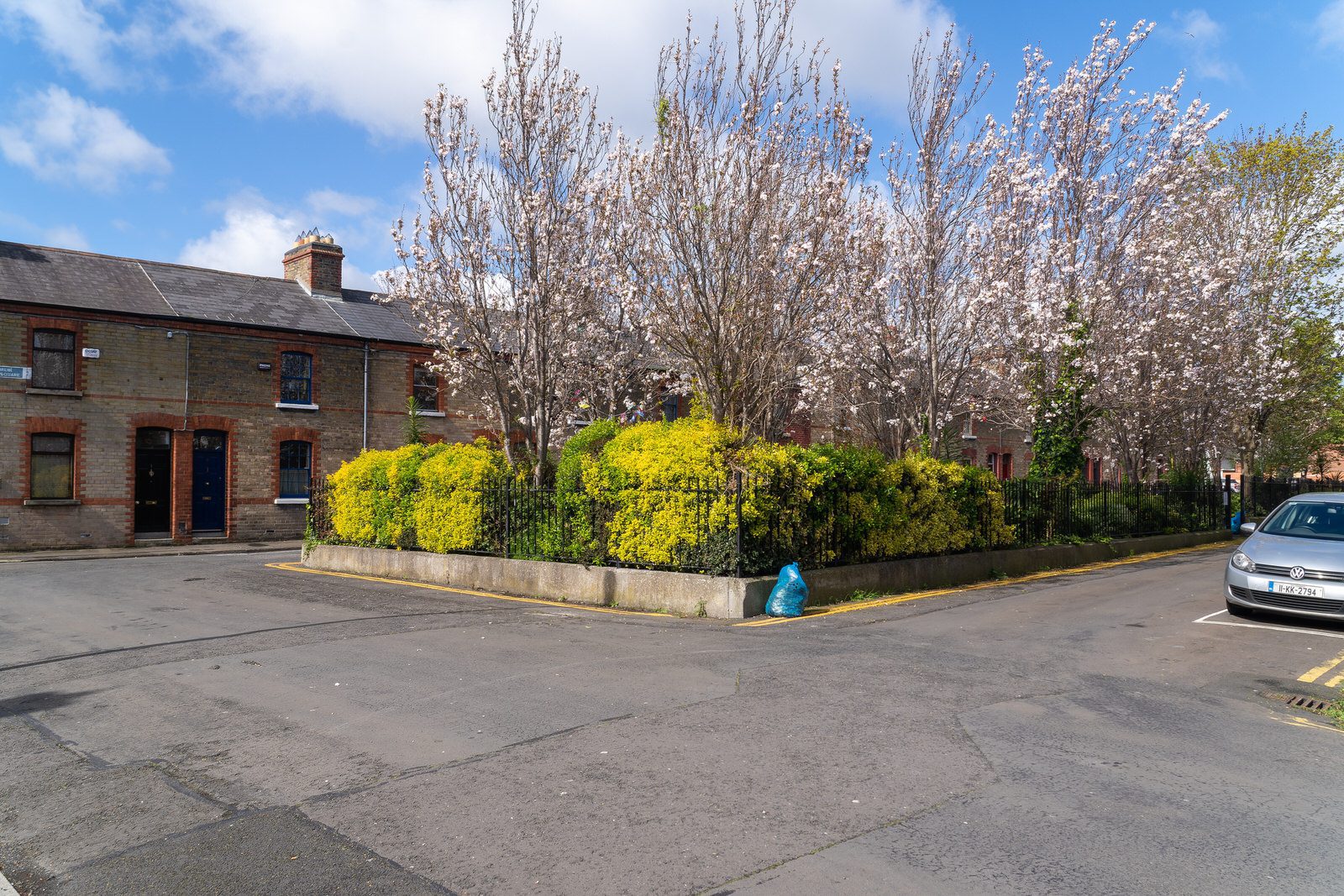
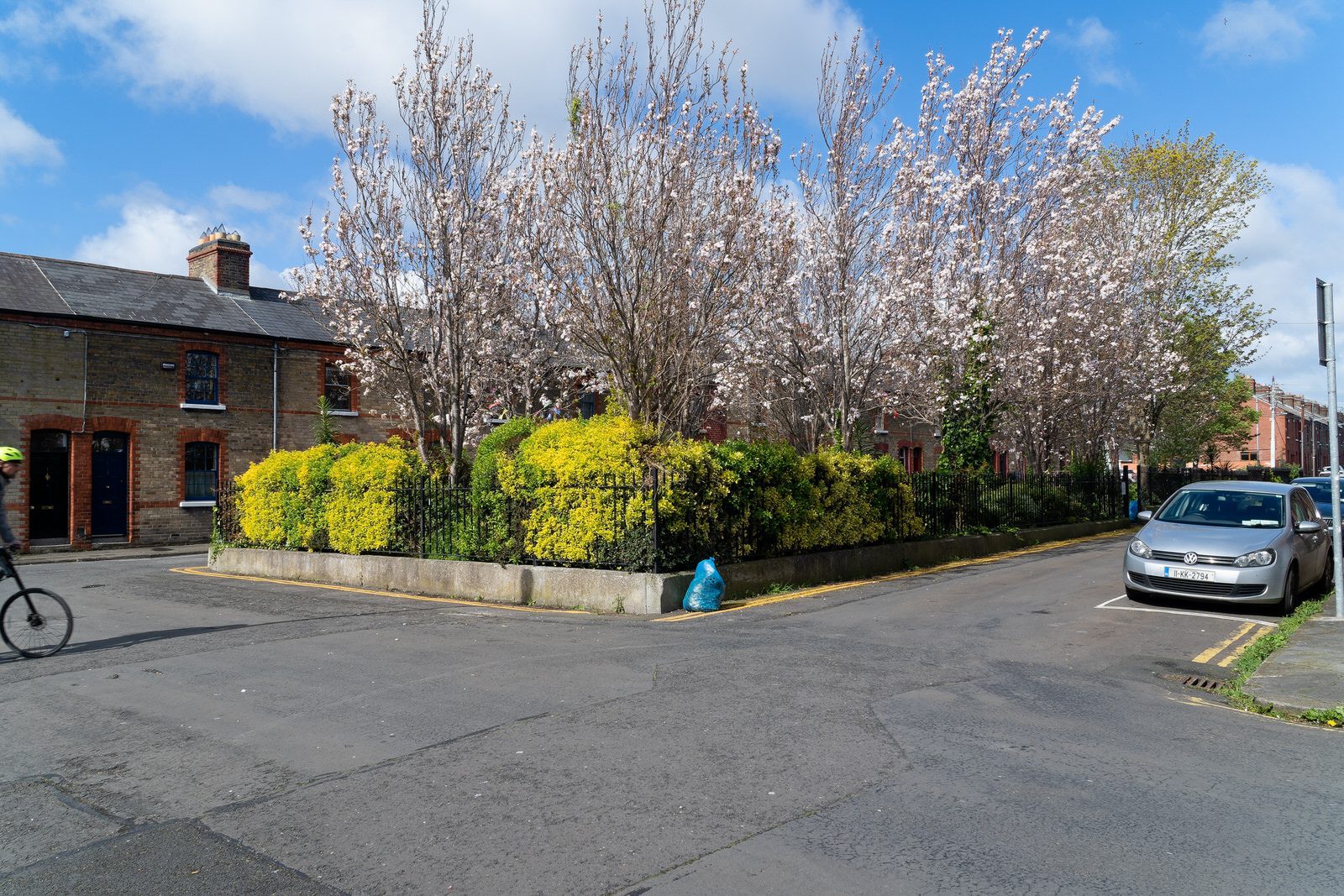
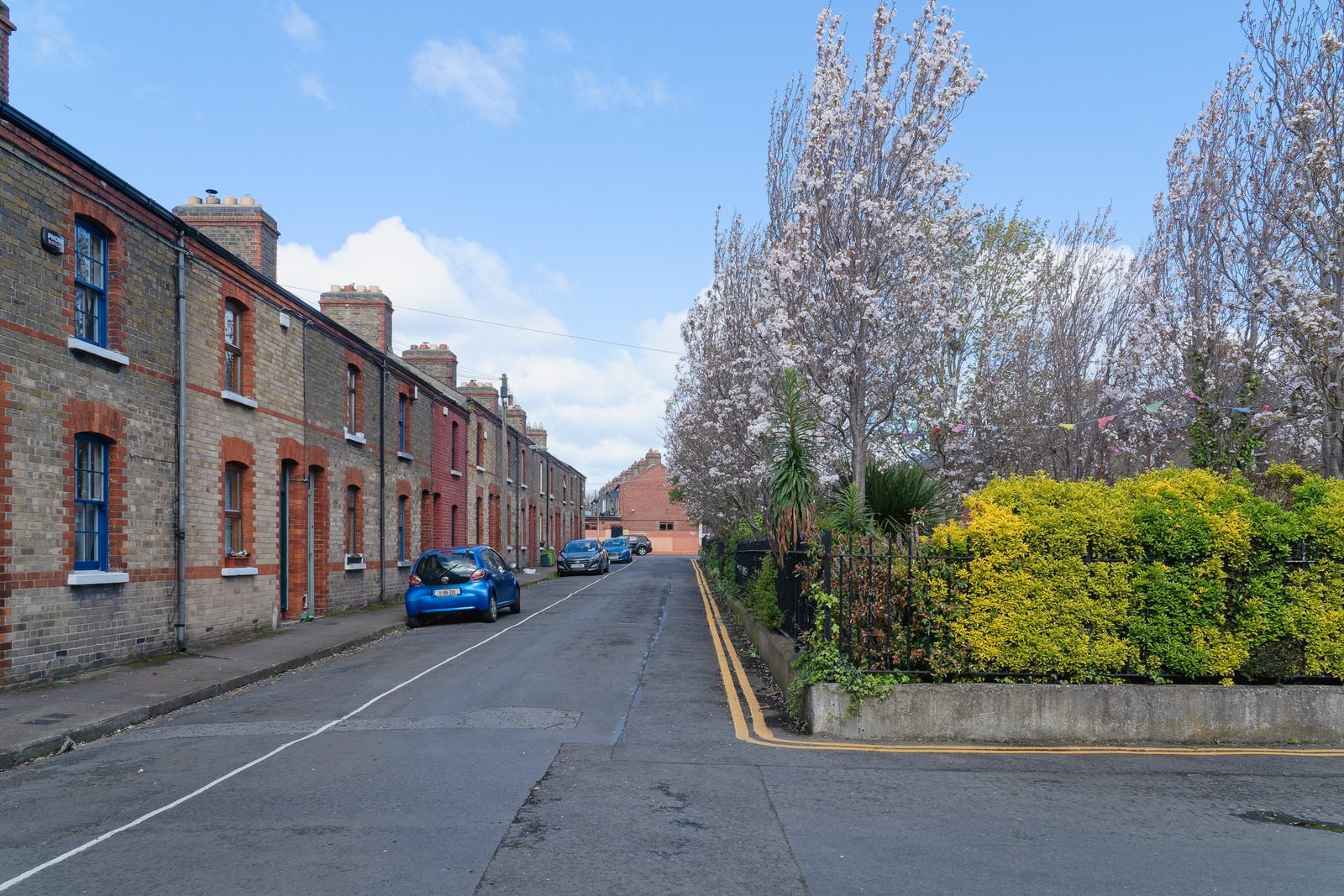
![WATER FEATURES [IVEAGH GARDENS DUBLIN]-214627-1 WATER FEATURES AT IVEAGH GARDENS 007](https://excellentstreetimages.com/ParksAndGardensWordPress/wp-content/uploads/2023/02/WATER-FEATURES-IVEAGH-GARDENS-DUBLIN-214627-1.jpg)
![WATER FEATURES [IVEAGH GARDENS DUBLIN]-214626-1 WATER FEATURES AT IVEAGH GARDENS 002](https://excellentstreetimages.com/ParksAndGardensWordPress/wp-content/uploads/2023/02/WATER-FEATURES-IVEAGH-GARDENS-DUBLIN-214626-1.jpg)
![WATER FEATURES [IVEAGH GARDENS DUBLIN]-214625-1 WATER FEATURES AT IVEAGH GARDENS 001](https://excellentstreetimages.com/ParksAndGardensWordPress/wp-content/uploads/2023/02/WATER-FEATURES-IVEAGH-GARDENS-DUBLIN-214625-1.jpg)
![WATER FEATURES [IVEAGH GARDENS DUBLIN]-214631-1 WATER FEATURES AT IVEAGH GARDENS 003](https://excellentstreetimages.com/ParksAndGardensWordPress/wp-content/uploads/2023/02/WATER-FEATURES-IVEAGH-GARDENS-DUBLIN-214631-1.jpg)
![WATER FEATURES [IVEAGH GARDENS DUBLIN]-214630-1 WATER FEATURES AT IVEAGH GARDENS 004](https://excellentstreetimages.com/ParksAndGardensWordPress/wp-content/uploads/2023/02/WATER-FEATURES-IVEAGH-GARDENS-DUBLIN-214630-1.jpg)
![WATER FEATURES [IVEAGH GARDENS DUBLIN]-214629-1 WATER FEATURES AT IVEAGH GARDENS 005](https://excellentstreetimages.com/ParksAndGardensWordPress/wp-content/uploads/2023/02/WATER-FEATURES-IVEAGH-GARDENS-DUBLIN-214629-1.jpg)
![WATER FEATURES [IVEAGH GARDENS DUBLIN]-214628-1 WATER FEATURES AT IVEAGH GARDENS 006](https://excellentstreetimages.com/ParksAndGardensWordPress/wp-content/uploads/2023/02/WATER-FEATURES-IVEAGH-GARDENS-DUBLIN-214628-1.jpg)
![HUMAN RIGHTS DEFENDERS MEMORIAL IN THE FORM OF AN OGHAM GARDEN [IVEAGH GARDENS IN DUBLIN]-214617-1 HUMAN RIGHTS DEFENDERS MEMORIAL IN THE FORM OF AN OGHAM GARDEN 013](https://excellentstreetimages.com/ParksAndGardensWordPress/wp-content/uploads/2023/02/HUMAN-RIGHTS-DEFENDERS-MEMORIAL-IN-THE-FORM-OF-AN-OGHAM-GARDEN-IVEAGH-GARDENS-IN-DUBLIN-214617-1.jpg)
![HUMAN RIGHTS DEFENDERS MEMORIAL IN THE FORM OF AN OGHAM GARDEN [IVEAGH GARDENS IN DUBLIN]-214618-1 HUMAN RIGHTS DEFENDERS MEMORIAL IN THE FORM OF AN OGHAM GARDEN 012](https://excellentstreetimages.com/ParksAndGardensWordPress/wp-content/uploads/2023/02/HUMAN-RIGHTS-DEFENDERS-MEMORIAL-IN-THE-FORM-OF-AN-OGHAM-GARDEN-IVEAGH-GARDENS-IN-DUBLIN-214618-1.jpg)
![HUMAN RIGHTS DEFENDERS MEMORIAL IN THE FORM OF AN OGHAM GARDEN [IVEAGH GARDENS IN DUBLIN]-214619-1 HUMAN RIGHTS DEFENDERS MEMORIAL IN THE FORM OF AN OGHAM GARDEN 011](https://excellentstreetimages.com/ParksAndGardensWordPress/wp-content/uploads/2023/02/HUMAN-RIGHTS-DEFENDERS-MEMORIAL-IN-THE-FORM-OF-AN-OGHAM-GARDEN-IVEAGH-GARDENS-IN-DUBLIN-214619-1.jpg)
![HUMAN RIGHTS DEFENDERS MEMORIAL IN THE FORM OF AN OGHAM GARDEN [IVEAGH GARDENS IN DUBLIN]-214620-1 HUMAN RIGHTS DEFENDERS MEMORIAL IN THE FORM OF AN OGHAM GARDEN 010](https://excellentstreetimages.com/ParksAndGardensWordPress/wp-content/uploads/2023/02/HUMAN-RIGHTS-DEFENDERS-MEMORIAL-IN-THE-FORM-OF-AN-OGHAM-GARDEN-IVEAGH-GARDENS-IN-DUBLIN-214620-1.jpg)
![HUMAN RIGHTS DEFENDERS MEMORIAL IN THE FORM OF AN OGHAM GARDEN [IVEAGH GARDENS IN DUBLIN]-214608-1 HUMAN RIGHTS DEFENDERS MEMORIAL IN THE FORM OF AN OGHAM GARDEN 009](https://excellentstreetimages.com/ParksAndGardensWordPress/wp-content/uploads/2023/02/HUMAN-RIGHTS-DEFENDERS-MEMORIAL-IN-THE-FORM-OF-AN-OGHAM-GARDEN-IVEAGH-GARDENS-IN-DUBLIN-214608-1.jpg)
![HUMAN RIGHTS DEFENDERS MEMORIAL IN THE FORM OF AN OGHAM GARDEN [IVEAGH GARDENS IN DUBLIN]-214610-1 HUMAN RIGHTS DEFENDERS MEMORIAL IN THE FORM OF AN OGHAM GARDEN 008](https://excellentstreetimages.com/ParksAndGardensWordPress/wp-content/uploads/2023/02/HUMAN-RIGHTS-DEFENDERS-MEMORIAL-IN-THE-FORM-OF-AN-OGHAM-GARDEN-IVEAGH-GARDENS-IN-DUBLIN-214610-1.jpg)
![HUMAN RIGHTS DEFENDERS MEMORIAL IN THE FORM OF AN OGHAM GARDEN [IVEAGH GARDENS IN DUBLIN]-214611-1 HUMAN RIGHTS DEFENDERS MEMORIAL IN THE FORM OF AN OGHAM GARDEN 007](https://excellentstreetimages.com/ParksAndGardensWordPress/wp-content/uploads/2023/02/HUMAN-RIGHTS-DEFENDERS-MEMORIAL-IN-THE-FORM-OF-AN-OGHAM-GARDEN-IVEAGH-GARDENS-IN-DUBLIN-214611-1.jpg)
![HUMAN RIGHTS DEFENDERS MEMORIAL IN THE FORM OF AN OGHAM GARDEN [IVEAGH GARDENS IN DUBLIN]-214612-1 HUMAN RIGHTS DEFENDERS MEMORIAL IN THE FORM OF AN OGHAM GARDEN 006](https://excellentstreetimages.com/ParksAndGardensWordPress/wp-content/uploads/2023/02/HUMAN-RIGHTS-DEFENDERS-MEMORIAL-IN-THE-FORM-OF-AN-OGHAM-GARDEN-IVEAGH-GARDENS-IN-DUBLIN-214612-1.jpg)
![HUMAN RIGHTS DEFENDERS MEMORIAL IN THE FORM OF AN OGHAM GARDEN [IVEAGH GARDENS IN DUBLIN]-214613-1 HUMAN RIGHTS DEFENDERS MEMORIAL IN THE FORM OF AN OGHAM GARDEN 005](https://excellentstreetimages.com/ParksAndGardensWordPress/wp-content/uploads/2023/02/HUMAN-RIGHTS-DEFENDERS-MEMORIAL-IN-THE-FORM-OF-AN-OGHAM-GARDEN-IVEAGH-GARDENS-IN-DUBLIN-214613-1.jpg)
![HUMAN RIGHTS DEFENDERS MEMORIAL IN THE FORM OF AN OGHAM GARDEN [IVEAGH GARDENS IN DUBLIN]-214614-1 HUMAN RIGHTS DEFENDERS MEMORIAL IN THE FORM OF AN OGHAM GARDEN 004](https://excellentstreetimages.com/ParksAndGardensWordPress/wp-content/uploads/2023/02/HUMAN-RIGHTS-DEFENDERS-MEMORIAL-IN-THE-FORM-OF-AN-OGHAM-GARDEN-IVEAGH-GARDENS-IN-DUBLIN-214614-1.jpg)
![HUMAN RIGHTS DEFENDERS MEMORIAL IN THE FORM OF AN OGHAM GARDEN [IVEAGH GARDENS IN DUBLIN]-214615-1 HUMAN RIGHTS DEFENDERS MEMORIAL IN THE FORM OF AN OGHAM GARDEN 003](https://excellentstreetimages.com/ParksAndGardensWordPress/wp-content/uploads/2023/02/HUMAN-RIGHTS-DEFENDERS-MEMORIAL-IN-THE-FORM-OF-AN-OGHAM-GARDEN-IVEAGH-GARDENS-IN-DUBLIN-214615-1.jpg)
![HUMAN RIGHTS DEFENDERS MEMORIAL IN THE FORM OF AN OGHAM GARDEN [IVEAGH GARDENS IN DUBLIN]-214616-1 HUMAN RIGHTS DEFENDERS MEMORIAL IN THE FORM OF AN OGHAM GARDEN 002](https://excellentstreetimages.com/ParksAndGardensWordPress/wp-content/uploads/2023/02/HUMAN-RIGHTS-DEFENDERS-MEMORIAL-IN-THE-FORM-OF-AN-OGHAM-GARDEN-IVEAGH-GARDENS-IN-DUBLIN-214616-1.jpg)
![HUMAN RIGHTS DEFENDERS MEMORIAL IN THE FORM OF AN OGHAM GARDEN [IVEAGH GARDENS IN DUBLIN]-214609-1 HUMAN RIGHTS DEFENDERS MEMORIAL IN THE FORM OF AN OGHAM GARDEN 001](https://excellentstreetimages.com/ParksAndGardensWordPress/wp-content/uploads/2023/02/HUMAN-RIGHTS-DEFENDERS-MEMORIAL-IN-THE-FORM-OF-AN-OGHAM-GARDEN-IVEAGH-GARDENS-IN-DUBLIN-214609-1.jpg)
